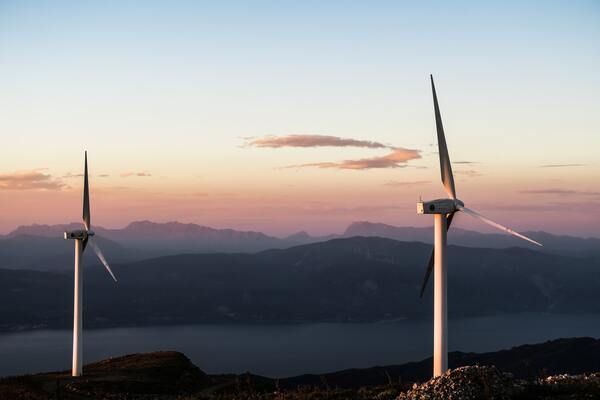You probably picture a Prius or a Tesla when you think of environmentally friendly vehicles. But over the past few decades, clean transportation has made important progress. From hybrid SUVs to electric sedans, there are many options available. What about non-electric energy sources? Chinook, a Montreal-based engineering company, creates cars that run entirely on wind energy.
The Potential Of Wind Power
The idea of using wind for transportation is thousands of years old, with some experts citing dates as far back as 5000 B.C. Since ancient times, we have propelled ships across the oceans by harnessing the wind’s energy with the help of enormous cloth sails.
On a smaller scale, airboats generate thrusts across the water in shallow or crowded areas where a traditional propeller would snag. They do this by turning enormous turbines.
These outdated methods are still used today to produce electricity in wind farms. Each tower has two or three enormous blades that, when moved by the wind, turn a rotor, which spins a turbine and generates electricity.
The most environmentally friendly option for a car right now is an electric one, but unless your home is powered by solar or wind energy, you’re still causing climate change by using electricity produced by burning fossil fuels.
Examples Of Wind-Powered Vehicle Projects
Electric and hybrid vehicles already come in a wide range of options. You can find options from all of the major car brands on the current market. Take Ford as an example, which invested $11 billion into electric vehicles in 2020. The following model in the expanding lineup will be the Mustang Mach-E. How have wind-powered cars performed in comparison?
Even though wind power applications for vehicles can be challenging, researchers have taken the initiative to investigate it. A Montreal-based team named Chinook first began to experiment in the field in 2009. Additional tests have also been carried out by Mercedes Benz and Lotus.
These innovations all use comparable strategies, where the car uses electric motors and wind turbines to produce power. Some scientists have combined solar power with wind turbines to produce even more energy.
However, you should know that the wind-powered vehicles developed here aren’t like regular ones. They are primarily single-person vehicles used as test models.
Wind-powered automobiles have a ways to go, but we can point to specific instances like Chinook’s projects as steps toward potential outcomes. We also cannot ignore the limitations of wind, though. We need to maintain reality even though the applications presented here have potential.
Concerns About Wind Power Cars
Although there are drawbacks to using renewable energy generally, there are also particular issues with wind. Drivers would have problems because it is an erratic resource if the wind were to occur. The following are some things to remember.
Weather Patterns
When using wind power, you can’t just add a battery to the car as you can with hybrid or electric vehicles. Since the wind doesn’t always blow, the process is complicated and unpredictable.
You can understand how you couldn’t drive without any air movement if you visualize a car with a fan propeller on the back. That clearly affects your ability to travel whenever you want and is an accessibility issue.
There are variables associated with wind patterns that would affect how vehicles could operate. Storms are a crucial factor to take into account because they will affect how reliable the wind is. Even though technology and data have made it possible for experts to predict these patterns to some extent, it is likely that wind cannot be consistently used to power vehicles.

Seasonal Changes
Seasons are also important to take into account. You could travel with ease in the winter because the wind is typically stronger then, but you would need to adjust when and where you drove in the spring because of the weather. Drivers would also need to determine whether they could travel to a particular location because states and regions have different weather patterns.
Electric Motor Adoption
Keeping this in mind, wind power for automobiles assumes that each one would have an electric motor. Already, in the United States, we have not succeeded in achieving that feat.
Less than 1% of the vehicles driven on the roads in America use electricity, so how can we expect to pursue wind energy if we can’t make electricity a popular alternative to fossil fuels?
Energy Demand
It’s also critical to understand estimates for the amount of wind energy that cars would require. Americans use 390 gallons of gasoline per day collectively. To fulfill the same need, electric vehicles would need a lot of kilowatt-hours. That number can be quite intimidating when you consider how unpredictable the wind is.
Conclusions
It’s safe to say that the revolution in energy for homes and businesses isn’t just about moving to renewable energy sources. Engineers around the world are conducting various types of research and development that show that these resources have the potential to power vehicles.
Before wind-powered cars become commonplace on the road, though, there are a few distinct issues that must be resolved.
